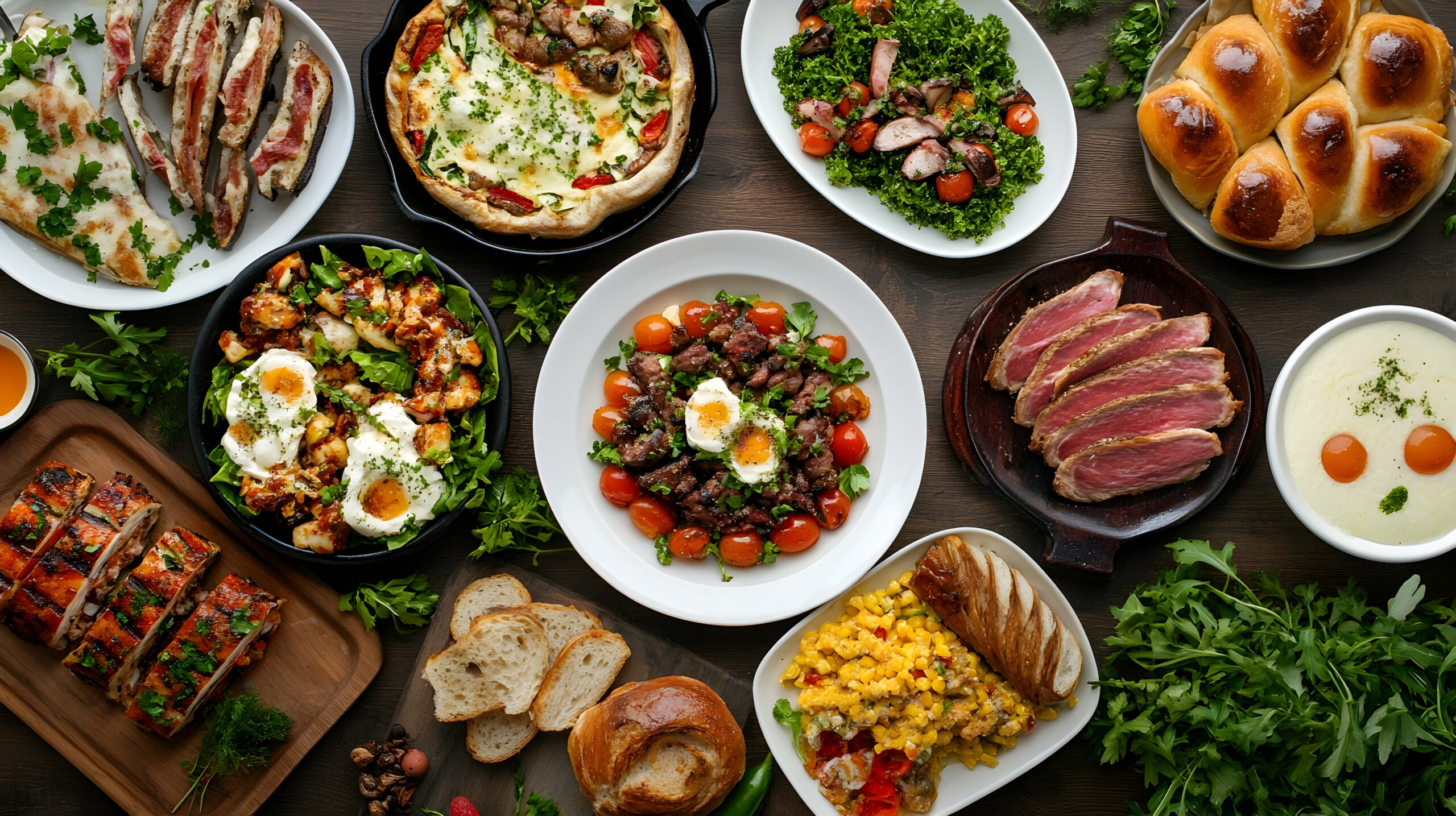Picture this:
Your friend invites you over for dinner. She made a big batch of her Meatloaf Casserole Surprise. The ingredients are a mystery to you, but, as promised, the casserole does surprise you—it’s delicious.
After two helpings, you start to wonder how you’re going to track all of your macros and calories for this meal. Tracking has been the key that’s helped you lose weight this month, and you’ve spent more time logging every morsel that enters your mouth into your tracking app than you’ve spent on Instagram!
If you’re honest, it’s been a big time commitment, and oftentimes, it’s not possible to log meals accurately.
For some, tracking macros may be no big deal — you have a system down that makes it easy! For others, tracking your macros may not feel sustainable for the long run. If you’re in this camp and you find it difficult and stressful to track your macros every day, here’s the lowdown on track-free eating:
The Pros and Cons of Tracking
I’m a huge fan of learning to track your food. There’s a long list of reasons why I encourage people to track what they eat. Tracking your macros:
- Creates nutritional awareness like nothing else
- Helps you learn what it takes to hit your daily protein goals
- Opens your eyes to how macro and calorically dense different foods are
- Leads to healthier choices in the long run
But, tracking is unsustainable. Few people can maintain sanity and track their food intake consistently, every day, forever. Lifelong tracking could:
- Make you hyper-focused on your diet to an unhealthy point
- Hinder you from completely kicking back, like during family vacations, holidays, or ladies’ nights out
- Move you toward the all-or-nothing mindset
- Make you feel like healthy living is unsustainable
How to Stay on Track without Tracking
Learning to reach your diet goals without tracking every day is key to long-term success. Try out these six track-free strategies I personally use on a daily basis.
1. Focus on Protein First
Proteins are found in every part of your body tissue—they make you what you are and keep you that way. Your body weight is also directly affected by the adequacy and quality of protein in your diet. This amazing macronutrient is satiating, increases muscle mass, repairs cells, and helps you keep weight off for the long term. Make protein your priority every day.
The current Recommended Dietary Allowance (RDA) for protein tells us the minimum amount of protein we need daily to prevent lean body mass loss. This number is often misunderstood as the recommended optimal daily intake.
For your body to function at its best, protein needs to make up 20-30% of your daily food intake, a much higher number than the RDA. Aim for at least 30-40 grams of protein per meal three times a day or 20-30 grams of protein per meal four times a day.
Is protein hard for you to pack in? Snack on these high-protein foods: meat, eggs, yogurt, cottage cheese, chickpea pasta, quinoa, high-protein bread, edamame, hemp hearts, snow peas, and tofu.
2. Load Up on Veggies
High-fiber, low-fat foods like vegetables are filling and great for your digestion. Plus, regarding calories and macros, they’re hard to overdo. Leafy greens, like watercress, arugula, lettuce, napa cabbage, and bok choy barely count calorically, but they’ll add bulk and filling fiber to your meal.
Besides weight loss, veggies bring many benefits. A diet rich in vegetables can help lower blood pressure, improve blood sugar, aid in digestion, reduce the risk of heart disease and stroke, and even prevent some types of cancer. Load your plate full of high-fiber vegetables at each meal to keep you satiated without having to track.
Not a huge fan of veggies? Try adding them to your morning omelet, roasting them with your favorite spices, air frying some sweet potato fries, or tossing a handful of spinach in your smoothies. You can also make some simple swaps with ingredients like cauliflower rice, spaghetti squash, or zoodles.
3. Put a Cap on High-Fat Foods
Healthy fats are critical for our physical and mental health, but in America, we tend to stuff ourselves with unhealthy fats. The whipped cream on top of your latte alone will add 10 grams of fat to your day! Fat tends to be the macronutrient we overdo accidentally, so you must eat it with intention.
Low-fat foods, though, tend to be packed with sugar. So what’s the healthy solution to fatty foods? Eat the right amount of the right fats.
When learning to eat well without tracking, keep an eye on the portion size of fatty foods. 1 gram of fat contains 9 calories. When fatty foods get out of hand, your calories can rack up fast.
Shoot for healthy fats, like avocados, salmon, eggs, grass-fed butter, nuts, and seeds. Fill up on protein and veggies, then add fats as a small side to keep your macros balanced.
4. Drink Water Like It’s Your Job
Your body is about 60% water. You’re a walking water balloon. Replenishing your water daily helps you work out harder, feel more satiety, and boost your metabolic rate.
Dehydration significantly impacts your health and weight loss efforts. Losing as little as 2% of your body’s water content can significantly impair your physical performance, your brain function, your energy levels, and even your mood.
Drink 8-12 cups of water each day to perform at your best physically and mentally. If you tend to neglect your water bottle, add a splash of unsweetened juice, some chunks of fruit, or an electrolyte supplement to add flavor.
5. Skip the Snacks
Most snacks are high in carbs and sugars while low in protein, fat, and fiber. Rather than running on whole-food nutrition, snacking causes our body to adapt and burn carbohydrates for energy.
Snacking can then steer your body away from burning fat for energy and make you crave sugars and bread when you’re hungry. Plus, frequent snacks keep you in limbo between hungry and full, never allowing you to empty your stomach completely and then fill it with a satiating and nutritious meal.
To keep your macros balanced, limit snacking between meals. Instead, stick with 3-4 healthy and filling meals a day.
6. Sip Booze on Saturday Only
I’m all for a crisp lager on game day or a minty mojito for ladies’ night. But alcohol slows down your metabolism, offers little to no nutritional value, and is often packed with empty calories.
Rather than going sober, you can lose weight, delete your tracking app, and enjoy a drink now and then. Simply limit alcohol to once a week.
Take a Break from Tracking
Just because you are not tracking doesn’t mean you can’t be successful! With a few strategies, you’ll build habits and learn how to eat intuitively. Practice these six tricks and start weaning yourself off your tracking app this week!
Want more practical tips on healthy living and weight loss? Get on the list to receive my weekly newsletter!
If you want to lose weight, tone up, or simply feel more energized and healthy, check out my LEAN program. Thousands have tried it, loved it, and have transformed their lifestyles and figures with it. See what they have to say about joining LEAN.





